Land Grid Array (LGA) and Ball Grid Gray (BGA) are both Surface Mount Technologies (SMT) for motherboards. They define HOW the CPU will be mounted on the motherboard’s socket.
Essentially, the most fundamental difference is that an LGA-based CPU can be plugged in and out of the motherboard and replaced. A BGA-based CPU, however, is SOLDERED on the motherboard and thus cannot be plugged out or replaced.
The BGA-based CPUs are generally found in mobile devices like laptops. At the same time, an LGA-based CPU is commonly used in desktops.
The following text will investigate the LGA vs. BGA comparison and discuss both sockets.
Note there is also the PGA (Pin Grid Array SMT). You can read more about this here: LGA vs. PGA.
TABLE OF CONTENTS
LGA vs. BGA Physical Differences
An LGA-based CPU has flat surface contacts and plugs into a motherboard’s CPU socket with several pins sticking out.
The CPU has to perfectly align with the pins to lock itself in place on the motherboard socket.
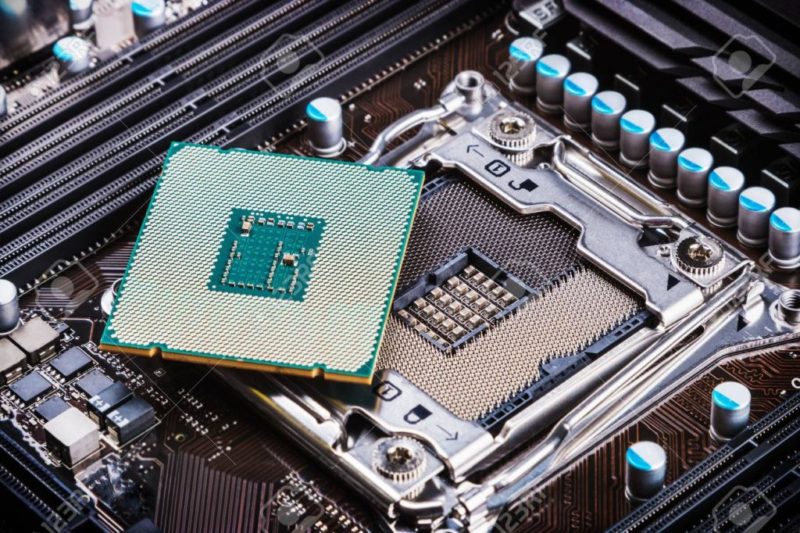
An LGA-type CPU is placed on top of a socket on a motherboard. The CPU has flat surface contacts, whereas the motherboard socket has pins.
On the other hand, a Ball Grid Array CPU has spherical contacts that are soldered onto the motherboard.
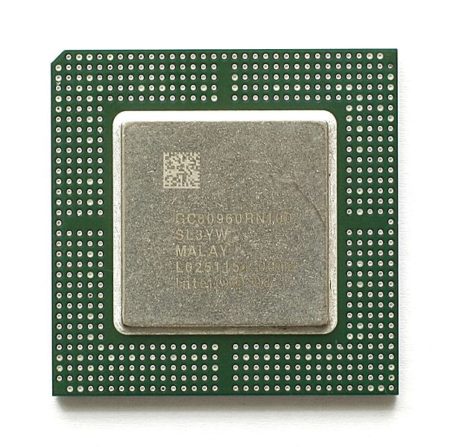
Image: A BGA CPU with spherical contacts that get soldered onto the motherboard. Source: Wikimedia
Also Read: How to Check Motherboard Socket?
What is a CPU Socket?
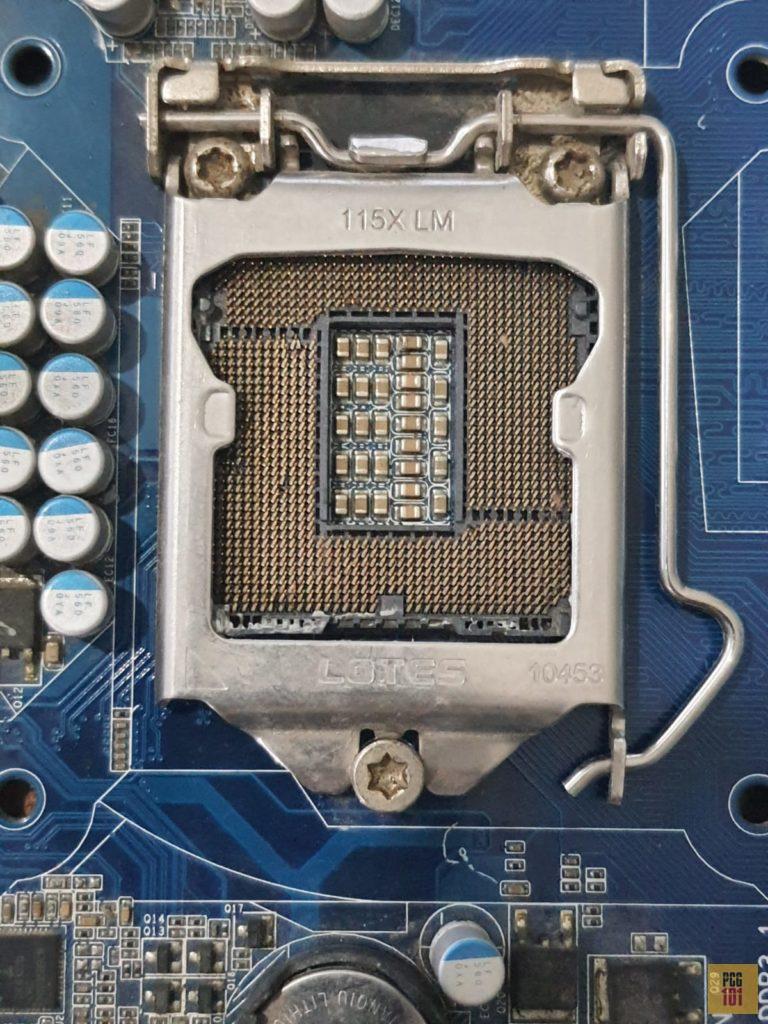
A CPU Socket is an integral part of a motherboard. It defines the make and model of the CPU it is compatible with.
The socket on your motherboard will also differ depending on whether your CPU is LGA, BGA, or PGA based.
There are many different sockets for different CPUs out there. For instance, Intel uses LGA1151 sockets for its desktop motherboard for its 8th and 9th Gen CPUs and LGA 1200 for its newer 10th and 11th Gen sockets.
AMD uses the PGA-based AM4 socket for its motherboards.
You must ensure you have the correct compatible motherboard socket for your CPU; otherwise, it would neither fit nor work.
Also Read: What CPU is Compatible with My Motherboard?
LGA vs. BGA
LGA Surface Mounting Technology
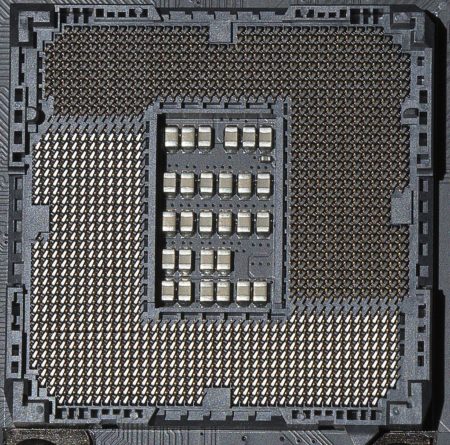
Intel has widely adopted the Land Grid Array socket in several CPU models for desktops.
It’s unique because the CPU has no pins or solder balls connecting to a motherboard. Instead, it has metal pads in a matrix along its bottom side.
These metal pads are the conductive surfaces that make contact with the pins. The pins themselves are located on the motherboard’s CPU socket.
One of the most significant benefits of an LGA-based CPU is that it can be plugged in and out of the desktop by the user.
Hence, most of the use for an LGA-based CPU is on desktops where users can access the motherboard and customize their PC by upgrading or replacing the CPU.
An LGA-based CPU is rarely found on laptops, though.
Intel is the Primary User of LGA Based CPUs
As mentioned earlier, Intel extensively uses LGA-based CPUs for their desktops.
Currently, Intel uses the following sockets for desktop-grade CPUs.
- LGA 1151 for 7th, 8th and 9th Gen Core, Pentium and Celeron CPUs
- LGA 1200 for 10th and 11th Gen Core, Pentium, and Celeron CPUs
For Intel Workstation CPUs:
- LGA 2066 for 10th Gen Intel Core Extreme processors like the Intel Core i9-10980XE.
As mentioned earlier, AMD predominantly uses the PGA (Pin Grid Array) socket for their CPUs. A PGA CPU is also replaceable and used on desktops.
LGA CPU Cautions When Installing
Because the contact pads of an LGA CPU, also called lands, sit flush with the bottom surface of the chip, they have to be firmly held in place to avoid any accidental movements.
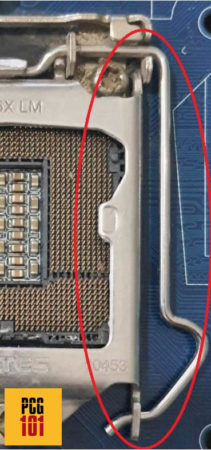
A pressure lever often accompanies an LGA socket on the motherboard to hold them in place.
Once the chip is installed, you must fasten it with the lever according to the method stipulated in the user manual to keep it in place firmly.
One of the most significant issues here is that applying pressure on the lever when the CPU is not positioned and aligned correctly on top of the pins on the motherboard socket can damage the CPU or the pins on the socket itself.
Also Read: Can You Upgrade CPU Without Changing the Motherboard?
BGA Surface Mount Technology
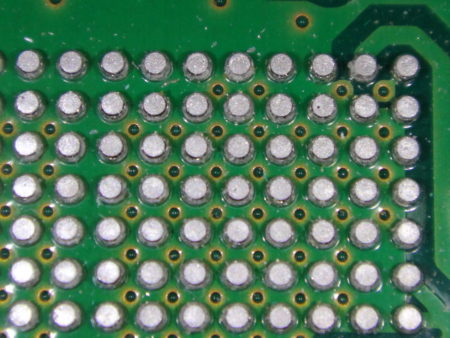
Ball Grid Array, or BGA, is a relatively old surface-mount technology for processor chips and CPU sockets utilized primarily by mobile devices.
Like in LGA, CPUs utilizing this BGA have numerous connection points at the bottom of the chip.
However, unlike the LGA CPUs, with BGA, the connection points are SOLDERED on the motherboard.
BGA sockets are smaller and, therefore, not found on desktops. Notebooks, on the other hand, commonly use BGA sockets.
Is BGA a Socket? – Advantages of BGA
BGA-based CPUs do not plug into a dedicated socket on a motherboard. A ‘socket’ means the CPU can be plugged in and out.
However, with BGA CPUs, that is not the case. BGA-based CPUs mounted on motherboards are NOT replaceable. These require special skills to be removed and replaced.
Also Read: Can I Upgrade My Laptop Processor from i5 to i7?
One of the most significant benefits of BGA is that it is easier to mass produce. The extensive solder ball contacts on the back of the BGA CPUs are far easier to print than the authentic and intricate flat connections found on LGA and pins on the PGA CPUs.
Additionally, a single ball has a far larger surface area than the precise and minute contacts and pins on the LGA and PGA CPUs. Hence, they are easier to align with the motherboard as well.
All this culminates in better economic value for the manufacturers. The devices using BGA can be mass-produced far more easily and quickly than the other surface mounting techniques.
Additionally, given that mobile devices like laptops are meant to move around and may occasionally come across serious bumps and shocks, the CPU must be soldered firmly in place, not accidentally unplugged from its socket.
Also Read: Can I Use Laptop CPU in Desktop?
Who Uses BGA Sockets?
In the world of PCs, both Intel and AMD use BGA sockets for their laptop CPU lines.
However, the BGA sockets are also used in devices other than PCs, such as smartphones and tablets. Therefore, Apple, Qualcomm, MediaTek, and other smartphone/tablet CPU manufacturers use BGA sockets.
Also Read: Where is the CPU Located in a Computer?
How to Figure Out What CPU Socket You Have?
The easiest way to figure out what CPU socket you have is to head over to the manufacturer’s website for technical details on your CPU.
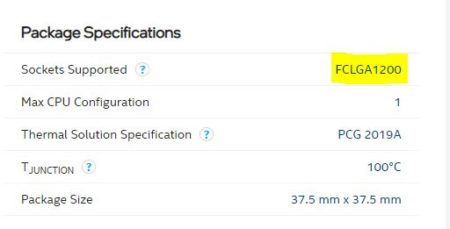
The image above shows the socket supported for the Intel Core i7-11700K. It reads FCLGA1200.
FCLGA stands for Flip Chip Land Grid Array. The number in the socket model tells you how many connections point the CPU and the socket will have.
So ‘1200’ means this CPU has 1200 flat contact points on its back. Similarly, the socket it plugs into will have 1200 pins sticking out.
Also Read: How Many Pins Does a CPU Have?
Conclusion
Here we reviewed the primary differences between LGA and BGA sockets. While they perform the same function (provide a connection technique for the CPU and the motherboard), they have very different use cases.
However, as a consumer, the key point is that the LGA CPUs are predominantly used in desktops and can be replaced. BGA CPUs are predominantly used in laptops and cannot be returned.
FREQUENTLY ASKED QUESTIONS
1. How do LGA and BGA sockets affect the thermal performance of a component?
LGA and BGA sockets can have different thermal performance characteristics.
Generally, LGA sockets have better thermal performance because they allow for a direct contact between the component and the heatsink, which helps to dissipate heat more efficiently.
BGA sockets, on the other hand, have a higher thermal resistance due to the presence of the solder balls, which can impede the transfer of heat from the component to the heatsink.
However, BGA sockets can compensate for this by using advanced cooling techniques such as heat pipes or vapor chambers.
2. Can LGA and BGA sockets be used interchangeably, or are they specific to certain types of components?
LGA and BGA sockets are not interchangeable, and they are specific to certain types of components.
LGA sockets are typically used for processors, while BGA sockets are commonly used for memory chips, graphic chips, and other high-density components.
LGA sockets have pins that are mounted on the motherboard, while BGA sockets have solder balls that are attached to the component.
Therefore, it is important to use the correct socket for the specific component to ensure proper connectivity and performance.
3. Are there any cost implications associated with using LGA vs BGA sockets?
Yes, there are cost implications associated with using LGA vs BGA sockets.
LGA sockets are generally more expensive to manufacture than BGA sockets due to the complexity of their design and the requirement for high precision during assembly.
Additionally, LGA sockets may require additional components such as retention mechanisms, which can further increase the cost.
BGA sockets, on the other hand, are generally less expensive to manufacture and assemble, which makes them a more cost-effective option for certain applications.
However, the cost difference may vary depending on the specific component and the manufacturer.
Also Read: How to Check What CPU You Have?
